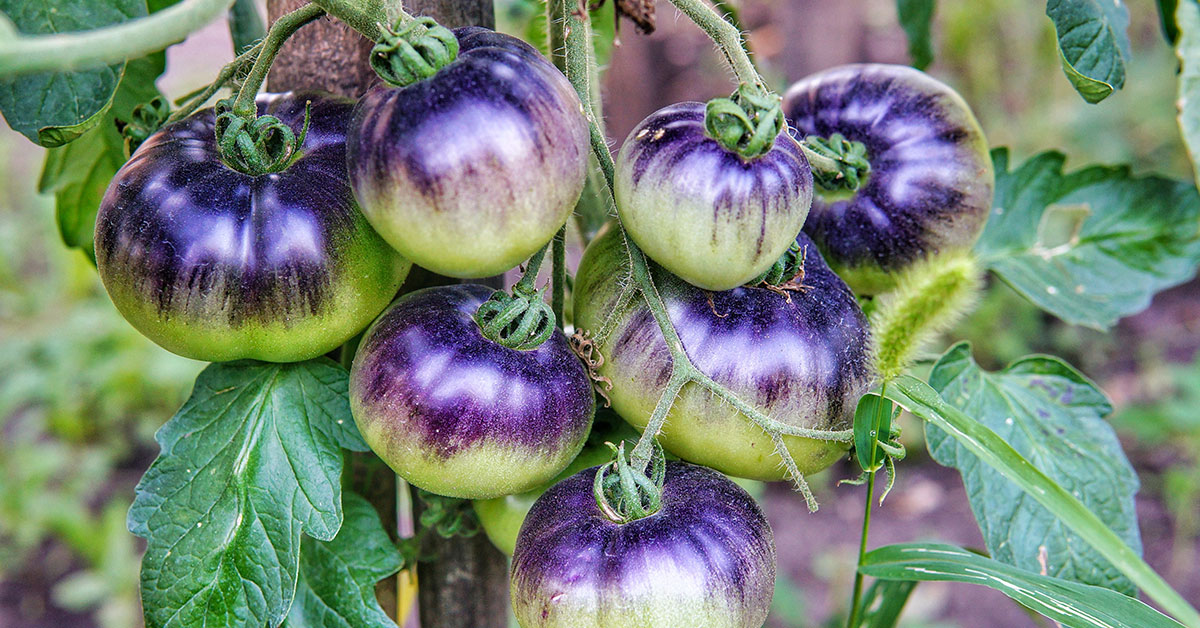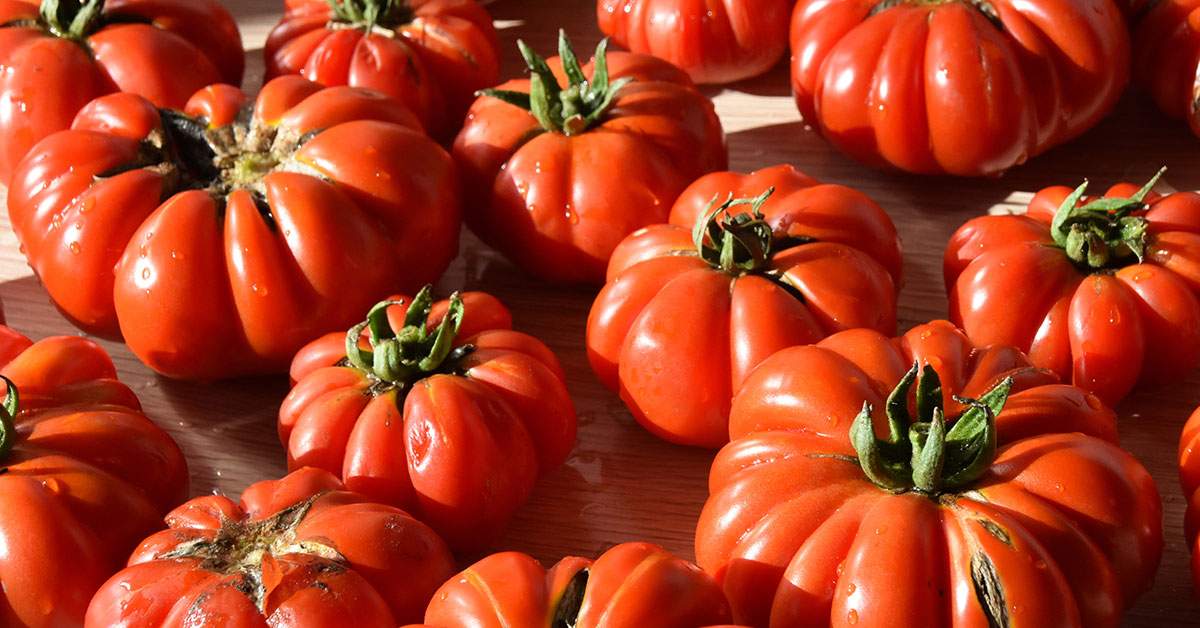The Purple Russian tomato is a unique variety of tomato that has gained popularity among home gardeners and food enthusiasts in recent years. This heirloom tomato boasts a striking deep purple color and a complex flavor profile that is both sweet and tangy. Originally from Russia, this tomato has made its way across the world and can now be found in gardens and markets everywhere. In this blog post, we’ll take a closer look at the Purple Russian tomato, its history, cultivation, and culinary uses.
What is a Purple Russian tomato?
Purple Russian tomato is a unique variety of tomato that has gained popularity in recent years. It is known for its rich, deep purple color and its distinct, sweet flavor. This tomato variety is not only visually appealing but also nutritious, making it a favorite among gardeners and food enthusiasts alike.
The Purple Russian tomato is a beefsteak-type tomato that originated in Russia. It is a relatively new variety that was developed in the early 2000s. This tomato is a hybrid, which means it is a cross between two different tomato varieties. The Purple Russian tomato is a cross between a black tomato and a green tomato.
One of the most striking features of the Purple Russian tomato is its color. The deep purple hue of this tomato is caused by the presence of anthocyanin, a powerful antioxidant that is also found in other purple foods like blueberries and grapes. This antioxidant is believed to have numerous health benefits, including reducing inflammation and improving heart health.
In terms of flavor, the Purple Russian tomato is described as having a complex, sweet flavor. It is less acidic than other tomato varieties, making it a great choice for dishes that require a sweeter tomato flavor. This tomato is also meaty and firm, making it a great option for sandwiches and salads.
Overall, the Purple Russian tomato is a unique and delicious variety of tomato that is worth trying. Whether you are a seasoned gardener or a food enthusiast looking to try something new, the Purple Russian tomato is sure to impress.
How to start Purple Russian tomato seeds
Starting tomatoes from seed is a cost-effective and rewarding way to grow your own tomato plants. To begin, choose the tomato varieties that suit your preferences and growing conditions.
Fill seed trays or pots with a lightweight and well-draining seed starting mix, plant the seeds at the recommended depth, and provide adequate moisture and warmth for germination.
Once the seedlings have developed their second set of true leaves, they can be transplanted into larger containers or individual pots. Gradually acclimate the seedlings to outdoor conditions before transplanting them into the garden.
By following these basic steps, you can successfully start tomatoes from seed and enjoy a thriving crop of homegrown tomatoes.
Additional Resource: Our comprehensive guide to starting tomatoes from seed
Growing & care
Transplanting and caring for tomatoes outdoors involves a few essential steps. First, choose a sunny location with well-drained soil. Prior to transplanting, harden off the seedlings by gradually exposing them to outdoor conditions.
Dig a hole slightly larger than the root ball of each seedling and plant them, burying the stem up to the first set of leaves. Water the seedlings thoroughly after transplanting. Provide consistent watering, aiming for 1-2 inches of water per week.
Stake or cage the plants for support and prune indeterminate varieties by removing suckers. Monitor for pests and diseases, taking prompt action if necessary. By following these steps, you’ll set your tomato plants up for healthy growth and a fruitful harvest.
Additional Resource: How to transplant and care for tomatoes outdoors
Common tomato pests and diseases
Tomatoes are susceptible to various pests and diseases that can affect their health and productivity. Some common tomato pests include aphids, tomato hornworms, whiteflies, and cutworms. These pests can cause damage to leaves, stems, and fruit, leading to reduced plant vigor and yield.
Additionally, tomato plants can be affected by diseases such as early blight, late blight, fusarium wilt, and verticillium wilt. These diseases can cause leaf discoloration, wilting, and fruit rot. Proper identification and timely intervention are crucial to effectively manage these pests and diseases and ensure the successful growth of tomato plants.
Additional Resource: Comprehensive list of tomato diseases and pests and how to fix them
Common problems
Growing tomatoes is a rewarding experience for any gardener. However, like with any crop, there are common problems that you may face when growing Purple Russian tomatoes. Here are some of the most common problems and what you can do to solve them.
- Blossom End Rot
Blossom End Rot is a common problem with growing tomatoes. This condition is caused by a calcium deficiency in the plant, which results in a dark, sunken spot on the bottom of the fruit. To prevent Blossom End Rot, ensure that the soil is well-drained and has enough calcium. You can also add a calcium-rich fertilizer or eggshells to the soil. - Tomato Hornworms
Tomato Hornworms are a common pest that can destroy your Purple Russian tomato plants. These caterpillars can grow up to 4 inches long and can quickly strip your plants of leaves and fruit. To control Tomato Hornworms, you can handpick the caterpillars and drop them into a bucket of soapy water. You can also use an organic pesticide or companion planting to deter them. - Early Blight
Early Blight is a fungal disease that can affect your Purple Russian tomato plants. It starts as small brown spots on the lower leaves and can spread quickly, causing the leaves to turn yellow and wilt. To prevent Early Blight, ensure that the plants are well-spaced to allow for proper air circulation. You can also apply a copper-based fungicide to the plants. - Cracking
Cracking is a common problem with tomatoes, including the Purple Russian variety. It occurs when the fruit expands too quickly, causing the skin to split. To prevent cracking, ensure that the plants are well-watered and have consistent moisture levels. You can also harvest the fruit when it is slightly underripe to prevent cracking.
In conclusion, growing Purple Russian tomatoes can be a rewarding experience. However, it is important to be aware of the common problems that you may face and take the necessary steps to prevent or solve them. With the right care and attention, you can enjoy a bountiful harvest of delicious Purple Russian tomatoes.
Uses for Purple Russian tomato
Purple Russian tomatoes are a unique variety of tomato that have a distinct color and flavor. They are typically used for a variety of culinary purposes due to their rich and complex taste. Here are some of the most common ways that Purple Russian tomatoes are used:
- Fresh eating: Purple Russian tomatoes are delicious when eaten fresh, either as a snack or as part of a salad. They have a sweet and slightly tart flavor that is unique to this variety of tomato.
- Salsa: Purple Russian tomatoes are a great choice for making salsa, as they have a complex flavor that can stand up to the other ingredients in the dish. They add a beautiful color to the salsa as well.
- Sauces: Purple Russian tomatoes can be used to make a variety of sauces, from pizza sauce to marinara. They are especially good for sauces that require a lot of depth and complexity of flavor.
- Roasting: Purple Russian tomatoes are delicious when roasted, as the heat brings out their natural sweetness. They can be used in a variety of dishes, from pasta to sandwiches.
- Canning: Purple Russian tomatoes are a popular choice for canning, as they have a high acidity level that makes them ideal for preserving. They can be used in a variety of canned goods, from salsa to tomato sauce.
Overall, the unique flavor and beautiful color of Purple Russian tomatoes make them a versatile ingredient in the kitchen. Whether you are using them fresh or cooked, they are sure to add a special touch to any dish.













